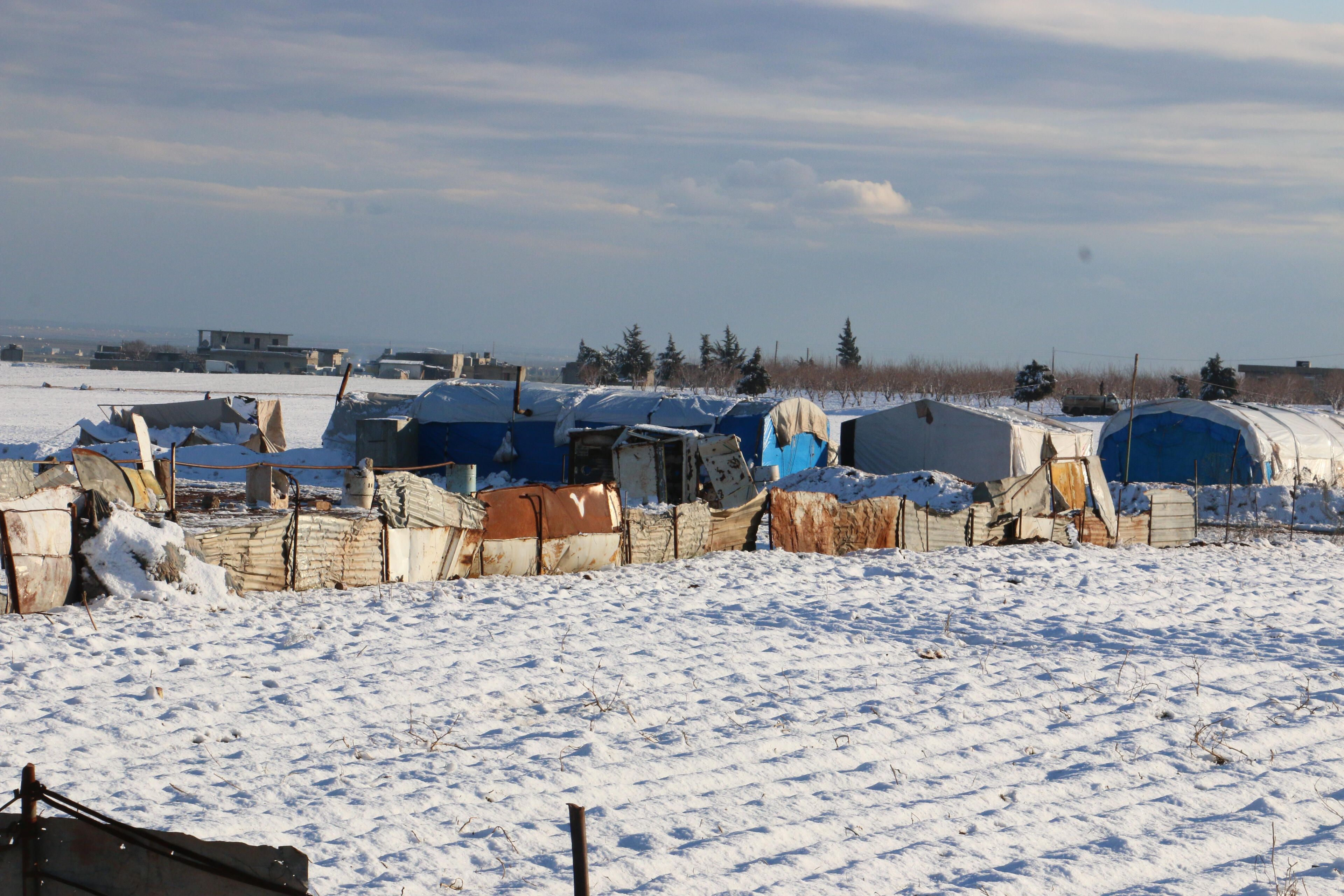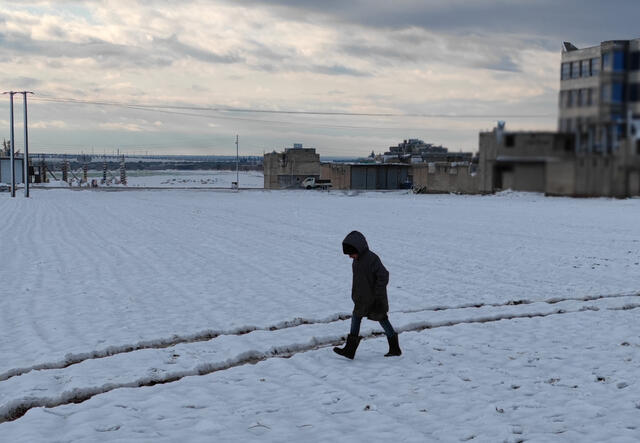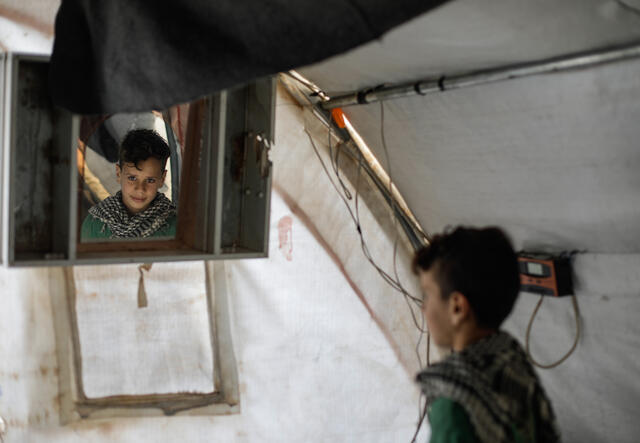
Syria is at the center of a catastrophic mix of economic crisis, conflict and COVID-19 that promises further deterioration in 2022. Here’s what you need to know about the worsening humanitarian crisis in Syria.
Update, March 15, 2022: After eleven years of conflict, more than 60% of Syrians—12 million people—are facing hunger and wondering how they will put food on the table for their families. Read what Syrians are telling us.
Syrians are enduring the worst economic crisis since the war began, with record levels of food insecurity and rapidly rising prices of basic goods. At the same time, water shortages in northern Syria are creating drought-like conditions for millions and jeopardizing already compromised health, water and other systems. Violence has diminished since the peak of the conflict but remains a major threat to civilians and civilian infrastructure in frontline areas. And there is an enduring risk of a major military offensive targeting areas outside government control. Moreover, years of conflict have deprived people of the resources to withstand additional shocks, which include the looming threat of the expiration of aid operations from Turkey.
The humanitarian situation inside Syria is fragile...
“The humanitarian situation inside Syria is fragile and has been further compounded by the global COVID-19 pandemic and the sharp economic downturn,” says Khaldoun Al-Amir, IRC health technical advisor for the Middle East and North Africa. “The estimated number of people in need of health care has increased in 2021 by around 5% and is expected to increase further in 2022. As a health professional, I hope that the international community will scale up their efforts to protect health care professionals and health care services.”

Humanitarian risks in 2022
Syria is facing the worst economic crisis since the war began—a situation that is likely to deepen in 2022 and exacerbate food insecurity for millions.
The crisis is driven by a range of factors, including the COVID-19 pandemic and the economic collapse in neighboring Lebanon (also on the Watchlist this year). The average price of essential food items increased by 236% between December 2019 and December 2020, while the Syrian pound lost 82% of its value against the dollar as the Lebanese economic crisis deepened between October 2019 and October 2021. The economic situation has contributed to record levels of food insecurity; 60% of the population are now facing food insecurity. As Syrians run out of options, they are increasingly forced to adopt negative coping mechanisms that include child labor and child marriage.
Syrians’ access to basic goods and services—from health care to clean water to food—is likely to be further compromised.
The war has been defined by the systematic targeting of civilian infrastructure, which has rendered half of health facilities and half of sewerage systems dysfunctional and many more in need of repair. Essential services are further undermined by severe water shortages in northern Syria due to higher-than-average temperatures and a depleted Euphrates River. The water crisis already affects 5 million Syrians. There is not enough water to maintain electricity across the region, compromising health facilities. The lack of clean water brings higher risk of disease and the spread of COVID-19. Additionally, prolonged water shortages for agriculture will force Syrians to abandon farmlands and livestock, destroying their livelihoods and self-sufficiency and exacerbating the hunger crisis.
Conflict remains intense in frontline areas, with an enduring risk of major escalation if the government attempts to retake areas outside its control.
Overall conflict activity has lessened, with a ceasefire holding in the northwest since March 2020 and one in the northeast since October 2019. However, airstrikes, shelling and other conflict activity continue on a regular basis, regularly killing civilians, destroying critical infrastructure, and at times forcing the suspension of schooling and other basic services. Moreover, the government could launch an offensive in 2022 to retake territory that remains outside its control. An escalation is particularly likely in the Idlib governorate, putting 3 million people at risk. Despite localized agreements, parts of southern Syria have also seen lower-level conflict and tensions since the government regained control over the area in 2018. Localized conflict may continue in these areas, as well as any areas that come under the government’s control.
The expiration of the last remaining border crossing for U.N. aid into Syria in mid-2022 could jeopardize the humanitarian response.
In July 2014, the U.N. Security Council authorized U.N. cross-border operations to bring aid from neighboring countries into Syria. Since 2020, the Council has reduced the number of permitted crossings from four to one despite rising needs, particularly in areas outside government control—the ones targeted by cross-border operations. In 2021, 81% of people in non-government controlled parts of the northwest and 69% in the northeast were in need of aid. The final crossing expires in July 2022, and there are currently no viable alternatives to cross-border aid. Without U.N. cross-border operations, it will be nearly impossible for humanitarian actors to mount the swift, large- scale response required to address new crises in 2022, much less meet existing needs.
Read more about the top 10 crises the world can’t ignore in 2022, learn how the IRC selected these countries, and download the full 2022 Emergency Watchlist report for data citations and profiles of all 20 crisis countries on the IRC's list.
How the IRC helps in Syria

The IRC has been working in Syria since 2012, responding to needs in the northwest and northeast. The IRC promotes economic recovery with job training, apprenticeships and small business support. IRC teams support early childhood development and provide counseling and protection services for women and children, particularly for survivors of violence. We support health facilities and mobile health teams with lifesaving trauma services, and with primary, reproductive and mental-health services. Our COVID-19 response includes promoting awareness campaigns and training health workers in infection prevention and control. The IRC also supports Syrian refugees in Jordan, Iraq and Lebanon. Learn more about the IRC’s Syria response.
How you can help in Syria
Syrians displaced by conflict have endured below-zero temperatures in makeshift shelters as a series of cold fronts gripped the Middle East in January.
It is freezing cold and we need urgent assistance.
“Due to the snowstorm, the tent my family and I stayed in was completely destroyed and our possessions have been damaged," said Mohannad*, 24, who has been displaced with his wife and two children to a camp in northwest Syria. "It is freezing cold and we need urgent assistance.”
Donate now to support the IRC's life-changing work in Syria and worldwide. We are on the frontlines providing critical aid to crisis-affected people in more than 40 countries, including places on the 2022 Emergency Watchlist.
*Name has been changed